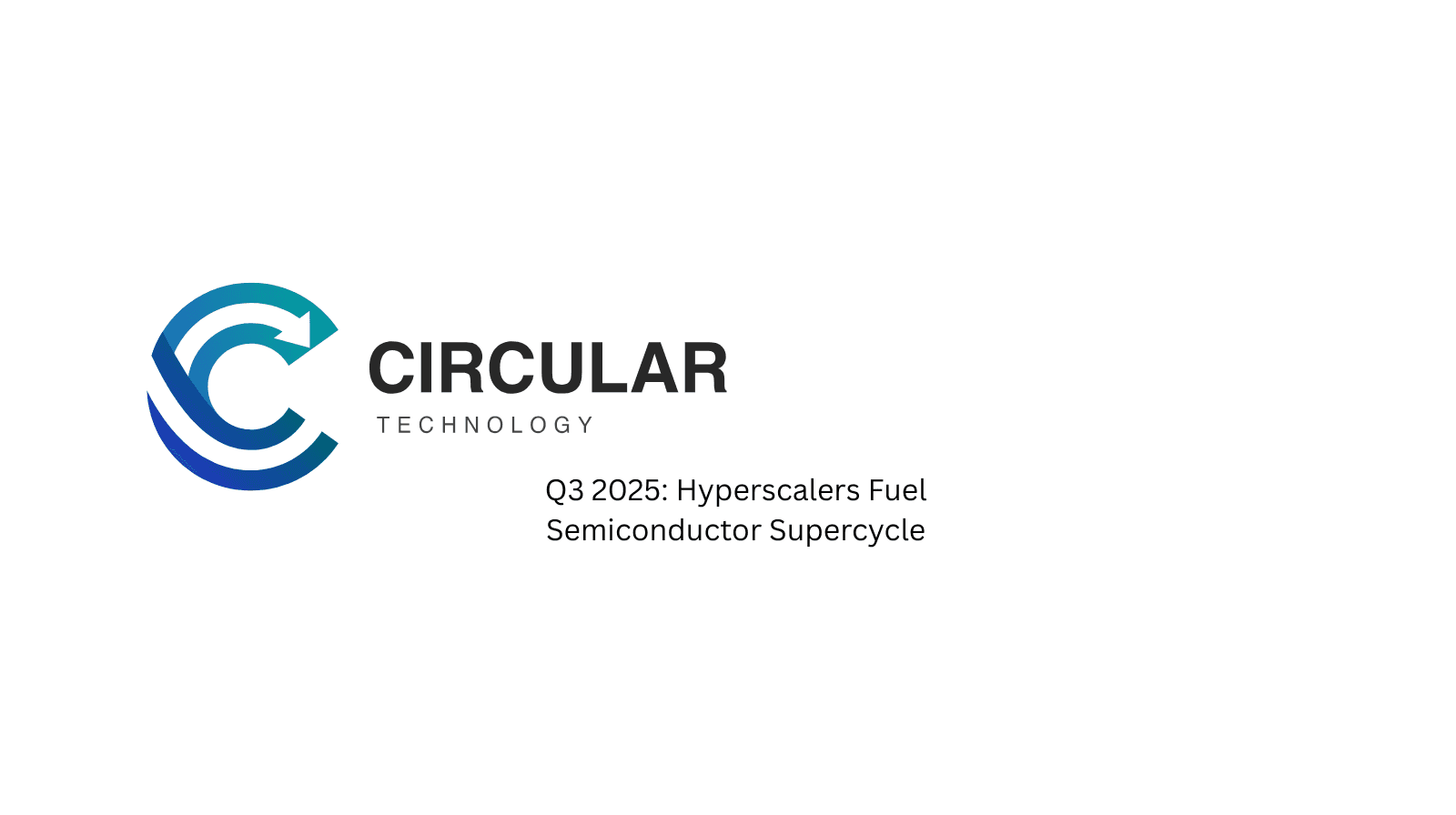
Q3 2025: Hyperscalers Fuel Semiconductor Supercycle
by Brad Gastwirth Global Head of Research and Market Intelligence
Key Takeaway: Q3 results from Alphabet, Meta, and Microsoft confirm that hyperscalers are aggressively scaling AI infrastructure, with demand for compute capacity far outpacing supply. This is driving record CapEx, straining semiconductor supply chains, and reshaping cost structures across the industry.
Supply Chain Impact:
- Sustained demand for GPUs, HBM, substrates, and networking
- Component-cost inflation and long lead-times impacting margins
- Multi-year strength for foundries, OSATs, and substrate suppliers
Cross-Company Themes & Strategic Read-Through
CapEx Cycle: Unprecedented Investment Levels. Combined capital expenditures from Alphabet, Meta, and Microsoft will exceed $180 billion in 2025, with all three guiding for further increases in 2026. This reflects a historic infrastructure build-out driven by AI demand.
AI Infrastructure Tightness: Demand Far Outpaces Supply
Each company emphasized that AI and cloud workloads are exceeding available infrastructure capacity. This tightness is expected to persist through at least mid-2026, with hyperscalers struggling to secure sufficient GPUs, memory, and networking hardware to support their growth ambitions.
Component Bottlenecks: Key Technologies Under Strain. The most constrained components across the supply chain include:
- High-bandwidth memory (HBM3/3E)
- Advanced packaging substrates (CoWoS, SoIC)
- GPU accelerators (NVIDIA H100/H200, AMD MI300X)
- Power and cooling systems for data centers
Foundry & Substrate Pressure: Capacity Near Limits
Foundries (TSMC, Samsung) and substrate makers (Unimicron, Kinsus, Nan Ya PCB) are operating near peak utilization, reflecting the intensity of demand and limited supply elasticity.
Cost & Margin Impact: Diverging Trends
Microsoft reported slightly lower gross margins, citing AI infrastructure scaling and component-cost inflation.
Meta did not report margin compression but flagged significant cost expansion, with investor concern over rising CapEx and operating expenses.
Alphabet maintained strong margins (~33.9% ex-EC fine), showing operational leverage despite elevated CapEx.
While not all three are seeing margin compression, the cost of scaling AI infrastructure is clearly impacting profitability trajectories and investor sentiment.
Strategic Implication: A Compute Arms Race
The hyperscalers are locked in a multi-year arms race for compute capacity. This benefits upstream semiconductor and equipment suppliers but introduces risks of persistent shortages, project delays, and capital inefficiency.
Bottom Line: Alphabet, Meta, and Microsoft are collectively signaling that AI infrastructure demand will remain supply-constrained well into 2026. The investment cycle is still early, and the supply chain remains under pressure.
Expect:
- 12–18 months of elevated component pricing
- Strong order visibility for upstream vendors
- Mixed margin outcomes depending on scale, efficiency, and product mix
Semiconductor and infrastructure suppliers remain key beneficiaries, but execution risk is rising as hyperscalers push the limits of global capacity.
by Brad Gastwirth Global Head of Research and Market Intelligence